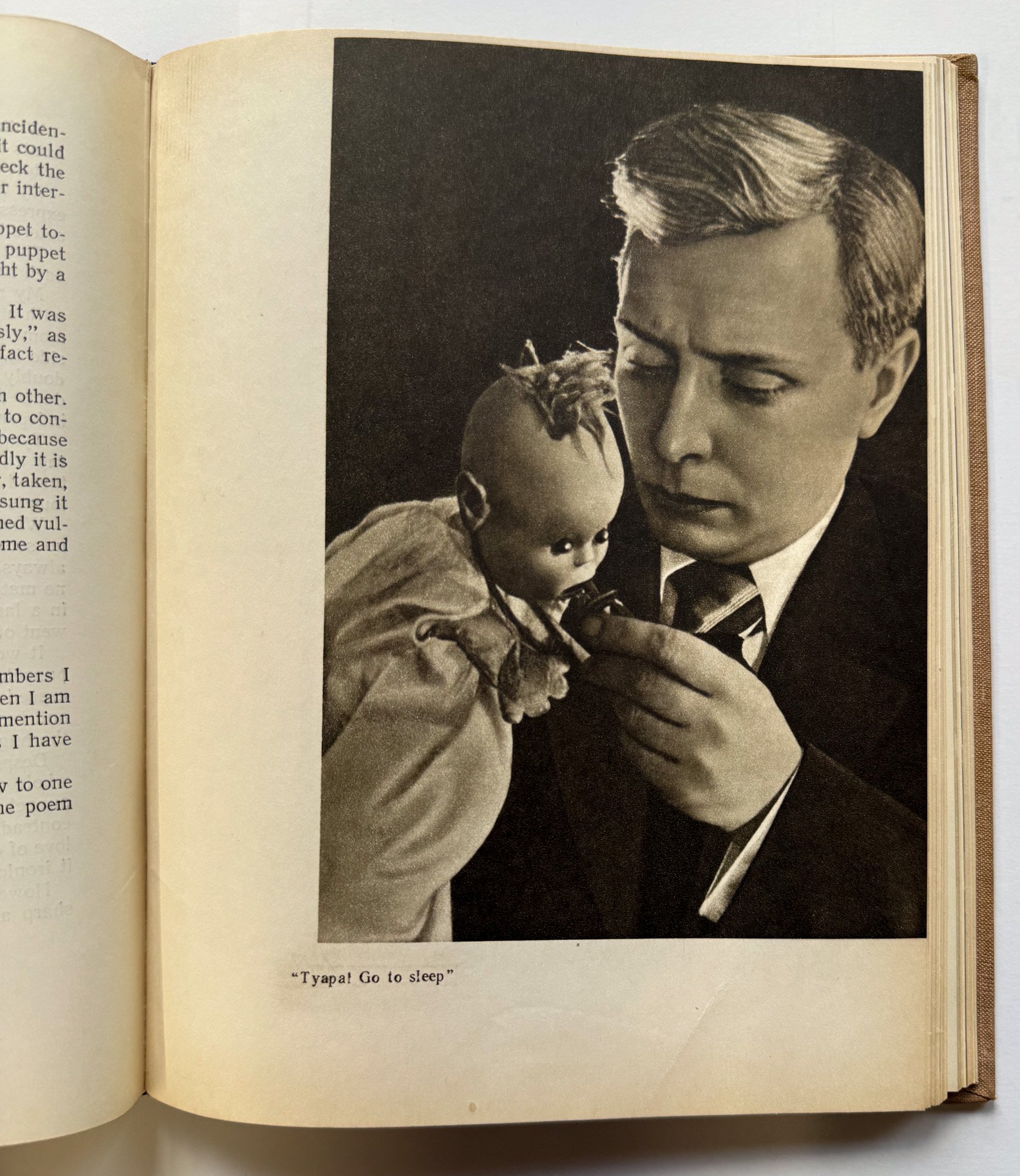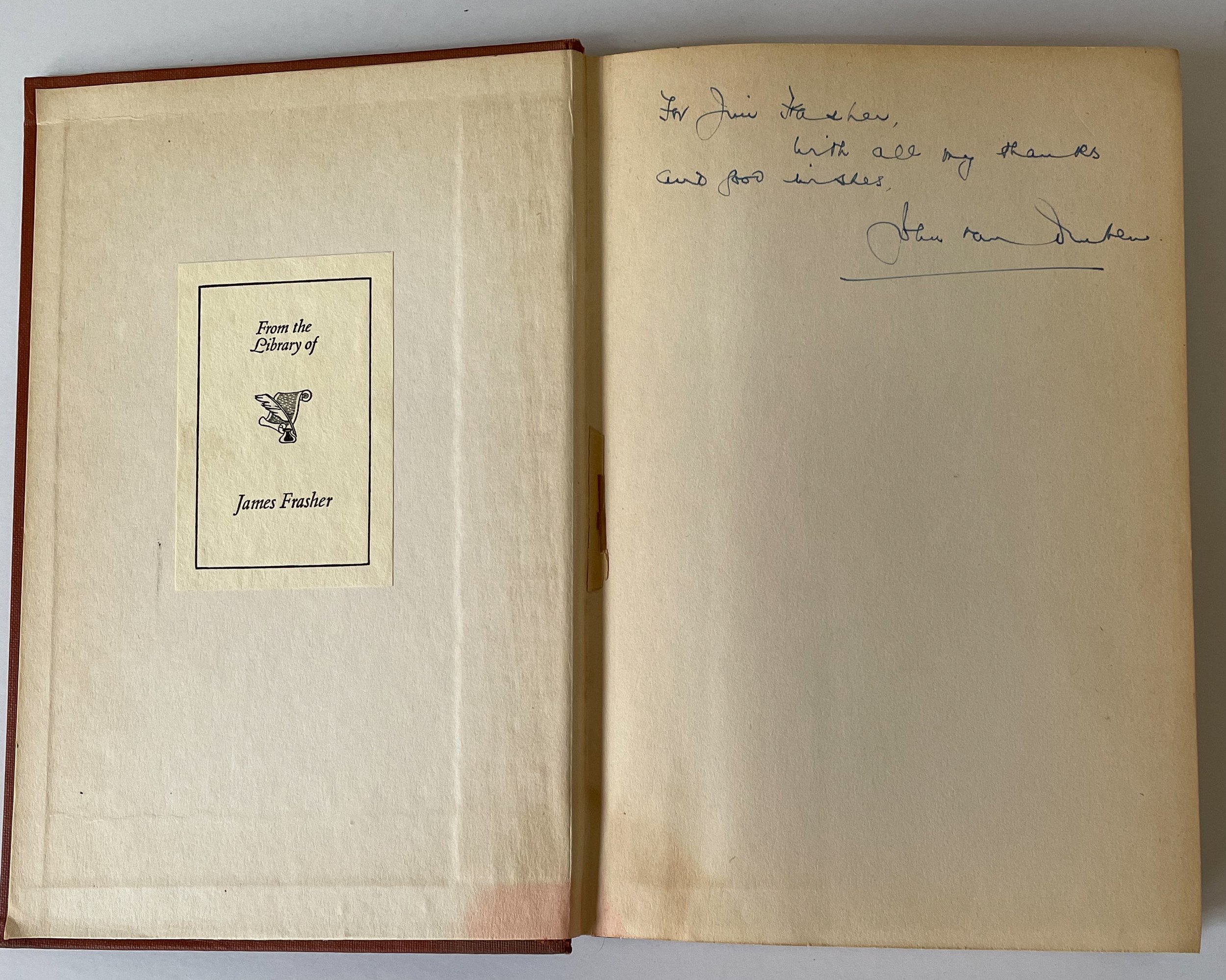 Image 1 of 7
Image 1 of 7

 Image 2 of 7
Image 2 of 7

 Image 3 of 7
Image 3 of 7

 Image 4 of 7
Image 4 of 7

 Image 5 of 7
Image 5 of 7

 Image 6 of 7
Image 6 of 7

 Image 7 of 7
Image 7 of 7








[1st ed] The Sleeping Ballerina: The Story of Olga Spessivtzeva (Inscribed)
First edition biography of legendary ballerina Olga Spessivtzeva, written by her former dance partner, the renowned Sir Anton Dolin. Published in Great Britain in 1966 by Frederick Muller Ltd. With a foreword by Dame Marie Rambert, a foundational figure of British ballet. 8vo, hardcover with photographic dust jacket, 130 pages, b/w illustrations throughout. Inscribed by the author on the title page.
Olga Spessivtseva (1895-1991) was one of the greatest dramatic ballerinas of the twentieth century. She came of age in a most storied period of ballet history, going from the Imperial Ballet of Tsarist Russia to Diaghilev’s Les Ballets Russes in Interwar Europe. The title of the book is likely a reference to her most famous premiere — the mythic “The Sleeping Princess” of 1921, the most lavish of all Ballets Russes productions. In additional to the purity of technique acquired from her Classical training, her facility and sensibility were ideally suited to repertoires of the Romantic era. She was particularly remembered for the ballet “Giselle”, and was the creator of the iconic Act I variation. She was so devoted to her craft, that she went so far as to visit a mental hospital to prepare for the famous “Mad Scene” of the ballet. Her performance, which fortunately survives in recording, was one of eerie naturalism — a refreshing contrast to the more common style of mannered melodrama that persists to this day. It was of great irony and tragedy that she should have ended up at the Hudson River State Hospital for twenty years, following a series of breakdowns in 1930s. This book was written shortly after her release.
Anton Dolin (1904-1983) was an English ballet dancer, choreographer, teacher and author. He was a male star in the second half of Les Ballets Russes de Diaghilev, where he acquired his russified stage name. A towering figure of British ballet, he founded what is today the English National Ballet with long-time dance partner Dame Alicia Markova (herself one of Serge Diaghilev’s “baby ballerinas”). He also lent his star power to what is today the American Ballet Theatre, as one of its inaugural principals. As a choreographer, he was most noted for his 1941 “reconstruction” of the fabled divertissement of Romantic ballet, “Pas de Quatre” (1845). His other homage to the Romantic era was the documentary, “A Portrait of Giselle” (1982), where he served as the narrator and interviewer; Spessivtseva was one of the featured ballerinas.
Light bumping and rubbing to extremities. Foxing to top edge; minor foxing to fore edge. Bumping and chipping to price-clipped dj, with some closed and open tears to top edge.
First edition biography of legendary ballerina Olga Spessivtzeva, written by her former dance partner, the renowned Sir Anton Dolin. Published in Great Britain in 1966 by Frederick Muller Ltd. With a foreword by Dame Marie Rambert, a foundational figure of British ballet. 8vo, hardcover with photographic dust jacket, 130 pages, b/w illustrations throughout. Inscribed by the author on the title page.
Olga Spessivtseva (1895-1991) was one of the greatest dramatic ballerinas of the twentieth century. She came of age in a most storied period of ballet history, going from the Imperial Ballet of Tsarist Russia to Diaghilev’s Les Ballets Russes in Interwar Europe. The title of the book is likely a reference to her most famous premiere — the mythic “The Sleeping Princess” of 1921, the most lavish of all Ballets Russes productions. In additional to the purity of technique acquired from her Classical training, her facility and sensibility were ideally suited to repertoires of the Romantic era. She was particularly remembered for the ballet “Giselle”, and was the creator of the iconic Act I variation. She was so devoted to her craft, that she went so far as to visit a mental hospital to prepare for the famous “Mad Scene” of the ballet. Her performance, which fortunately survives in recording, was one of eerie naturalism — a refreshing contrast to the more common style of mannered melodrama that persists to this day. It was of great irony and tragedy that she should have ended up at the Hudson River State Hospital for twenty years, following a series of breakdowns in 1930s. This book was written shortly after her release.
Anton Dolin (1904-1983) was an English ballet dancer, choreographer, teacher and author. He was a male star in the second half of Les Ballets Russes de Diaghilev, where he acquired his russified stage name. A towering figure of British ballet, he founded what is today the English National Ballet with long-time dance partner Dame Alicia Markova (herself one of Serge Diaghilev’s “baby ballerinas”). He also lent his star power to what is today the American Ballet Theatre, as one of its inaugural principals. As a choreographer, he was most noted for his 1941 “reconstruction” of the fabled divertissement of Romantic ballet, “Pas de Quatre” (1845). His other homage to the Romantic era was the documentary, “A Portrait of Giselle” (1982), where he served as the narrator and interviewer; Spessivtseva was one of the featured ballerinas.
Light bumping and rubbing to extremities. Foxing to top edge; minor foxing to fore edge. Bumping and chipping to price-clipped dj, with some closed and open tears to top edge.


































